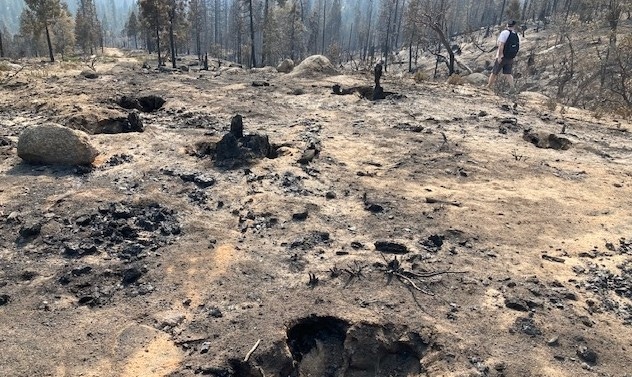
After another record year for California wildfire, concern is now turning to the soil impacted by firestorms, reported Sarah Klearman in the Napa Valley Register.
High-temperature flames can incinerate vegetation and destroy plant root systems, said Toby O'Geen, UC Cooperative Extension soil specialist at UC Davis. The loss of vegetation destabilizes the landscape, making it vulnerable to serious erosion or flooding.
"The most important way to battle erosion is to have surface cover - living vegetation anchoring your soil," O'Geen said. "We have none of that. If you have soil with existing susceptibility (to erosion) and now nothing to hold it in place, it's a new disaster."
Particularly catastrophic fire can make the soil surface water repellent, which allows water to pond up and release higher concentrations of run-off water even when rainfall is low.
"That creates more massive erosive events - it gives rise to accelerated erosion, and in some extreme instances, mudslides," O'Geen said.
Source: University of California Division of Agriculture and Natural Resources, which is solely responsible for the information provided and is wholly owned by the source. Informa Business Media and all its subsidiaries are not responsible for any of the content contained in this information asset.
About the Author(s)
You May Also Like




